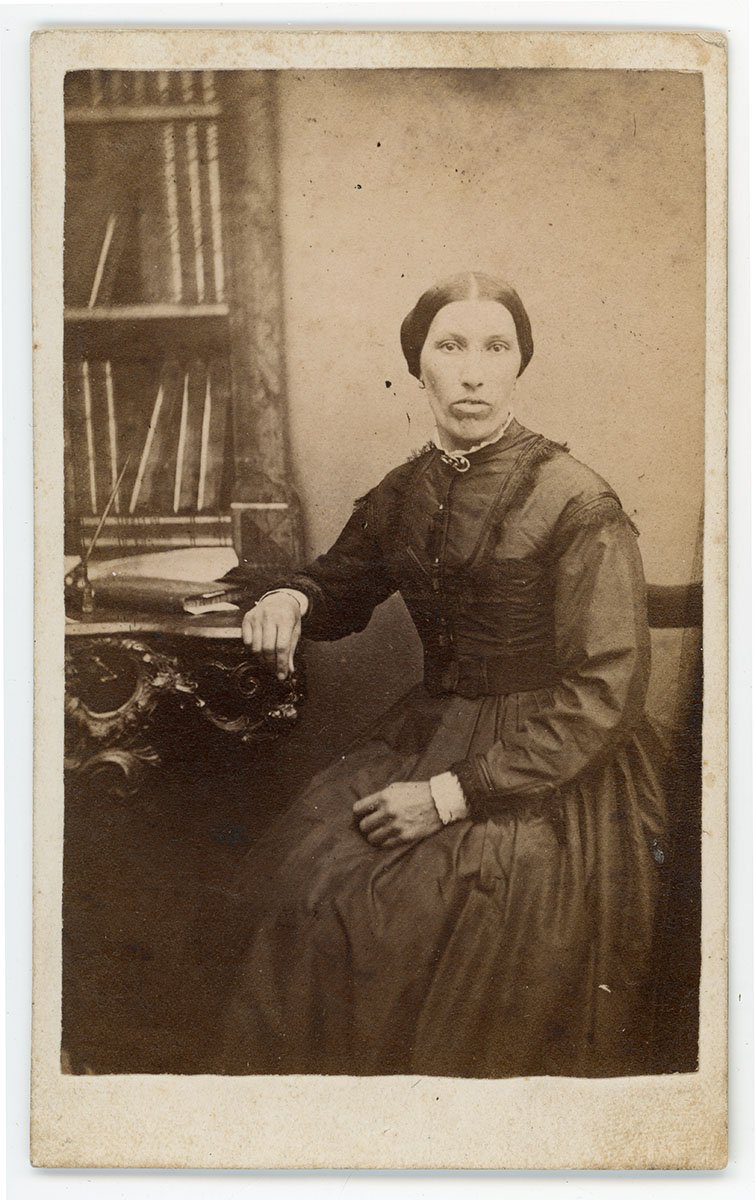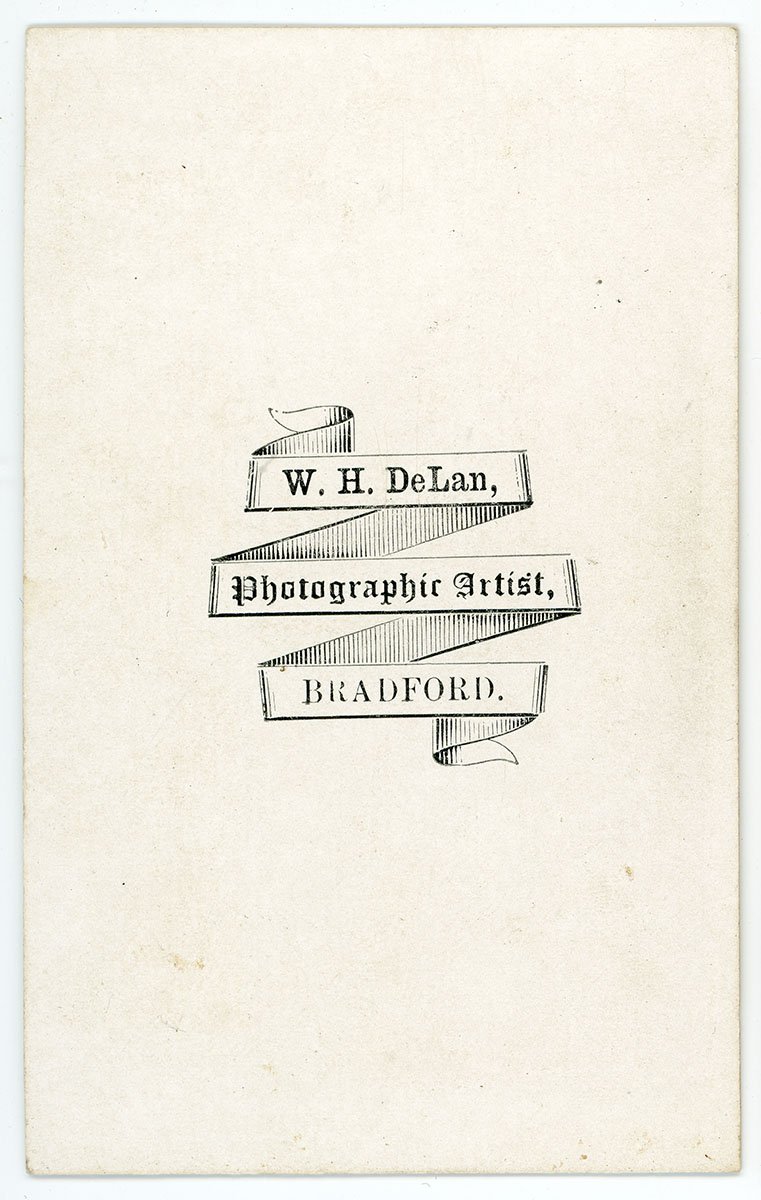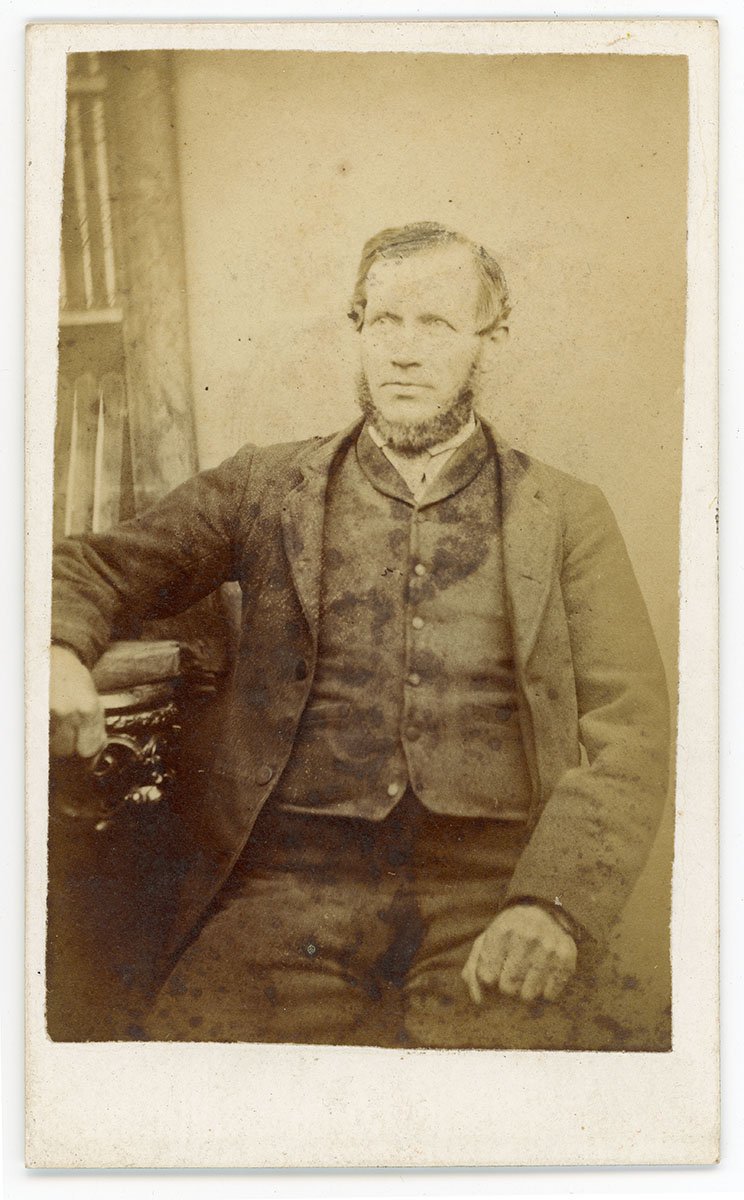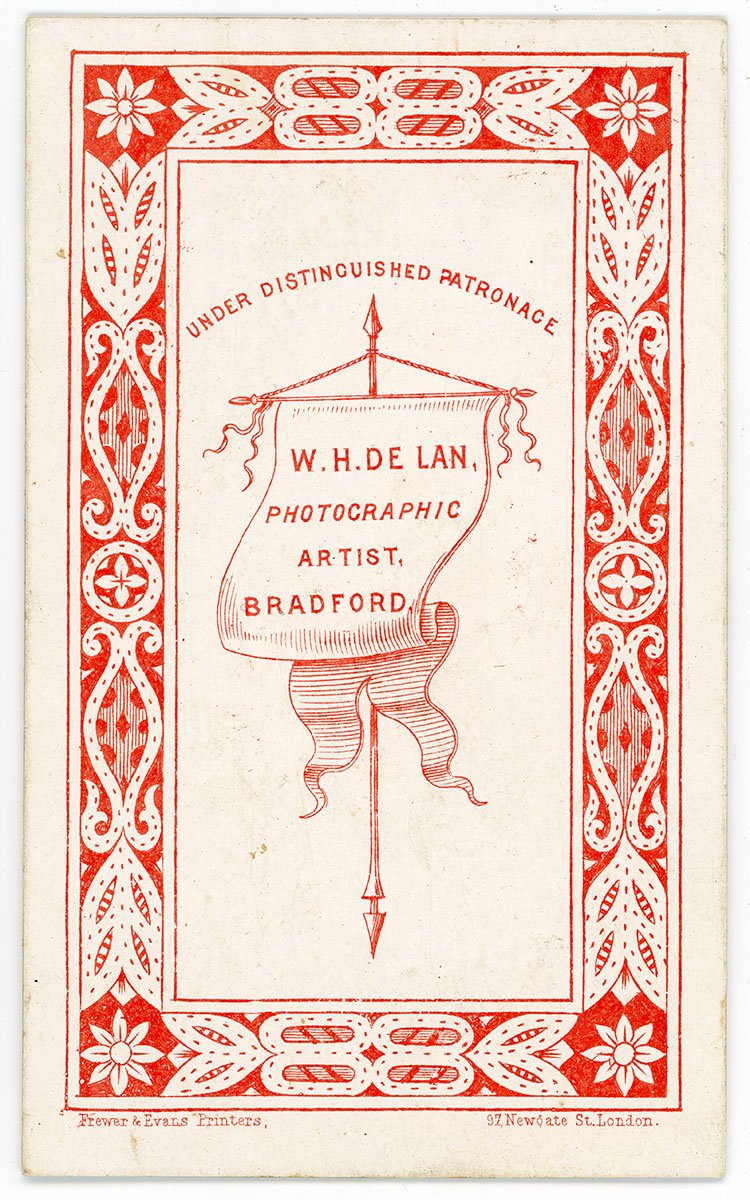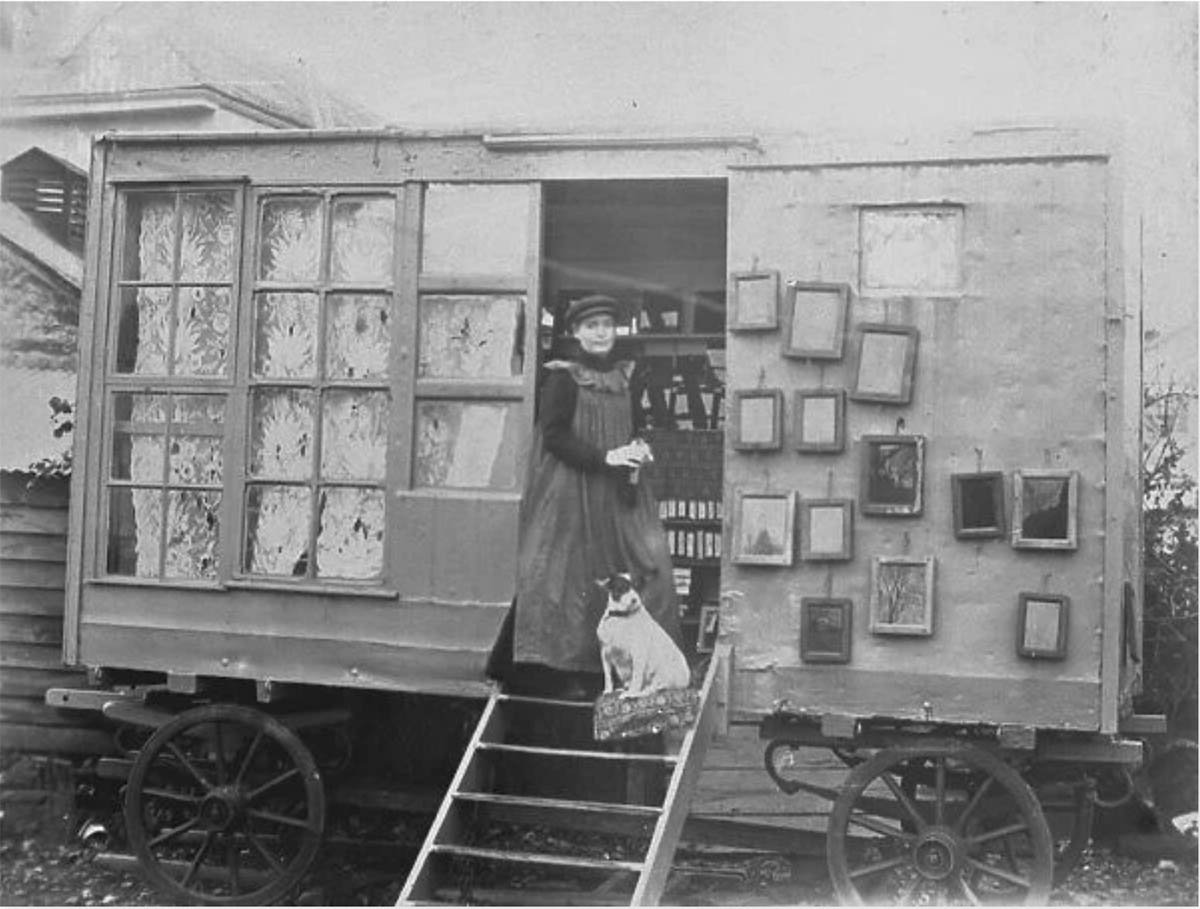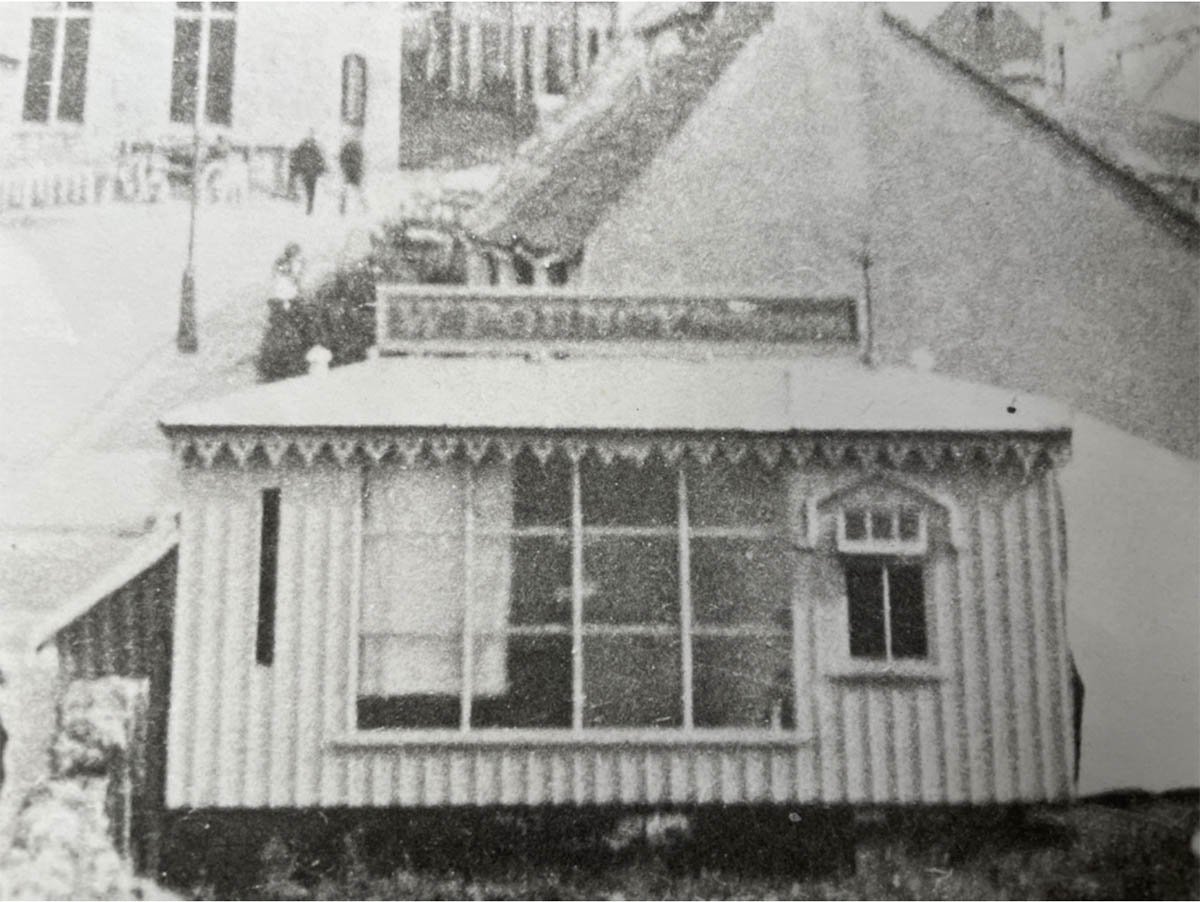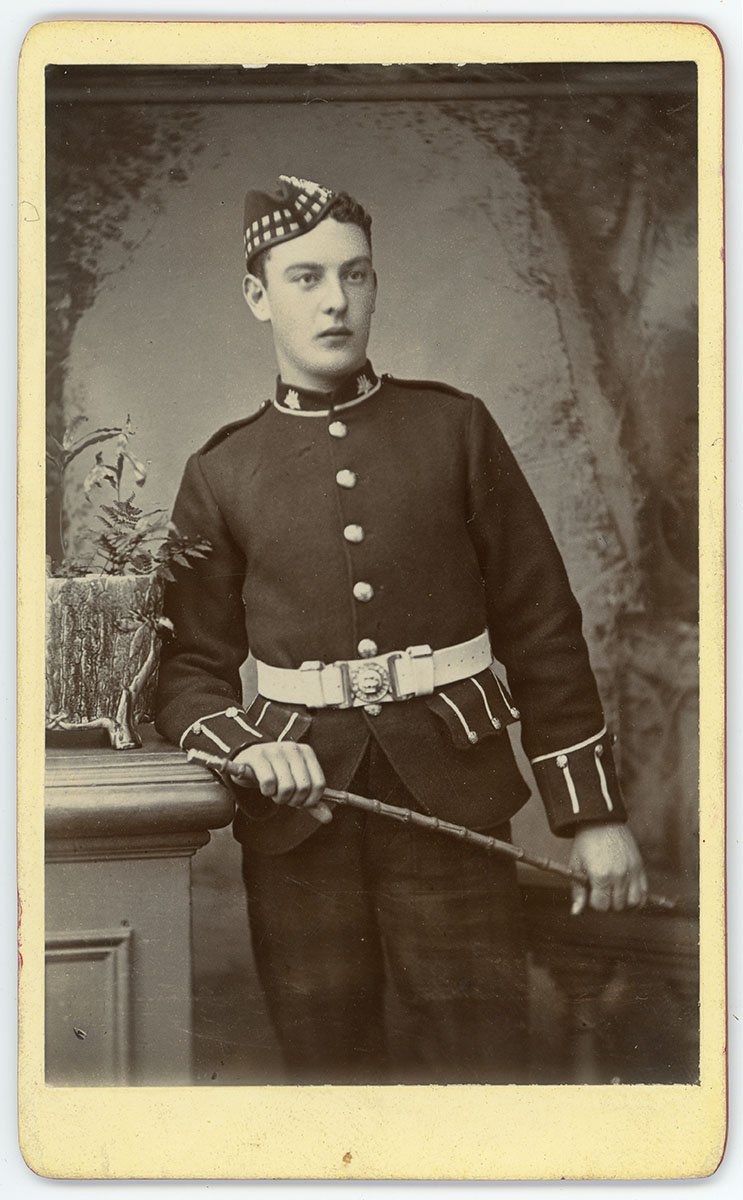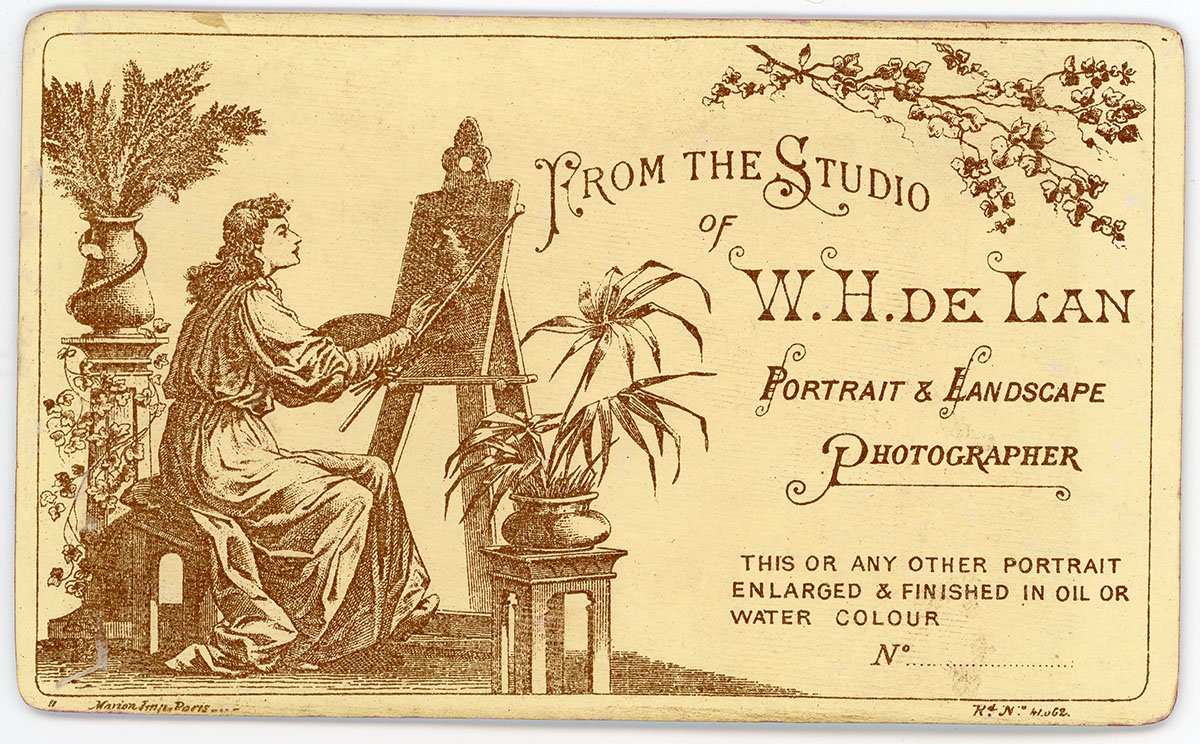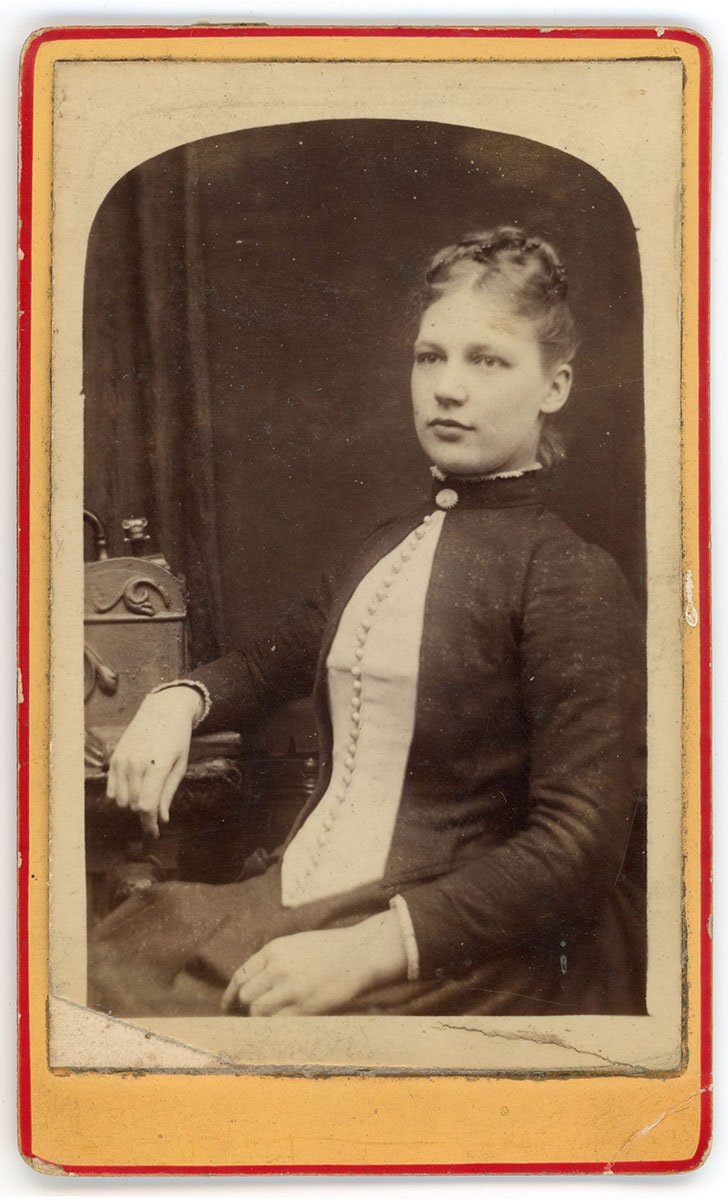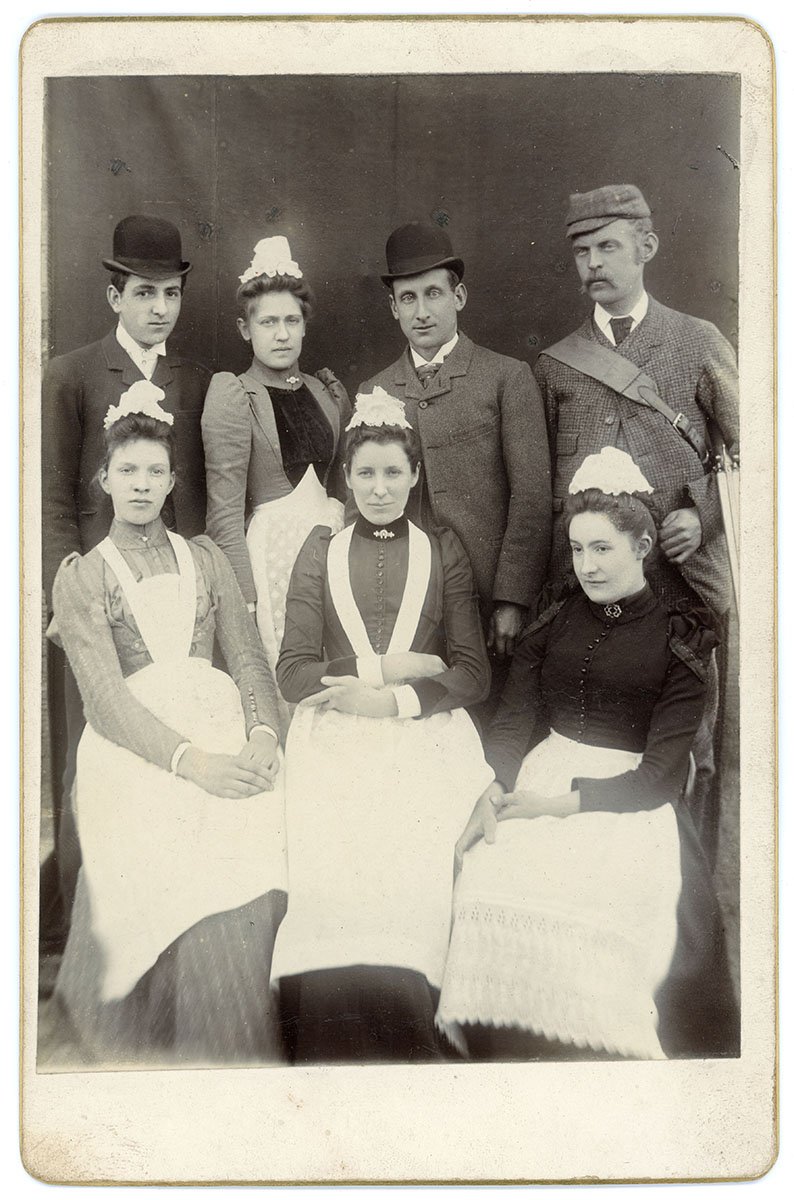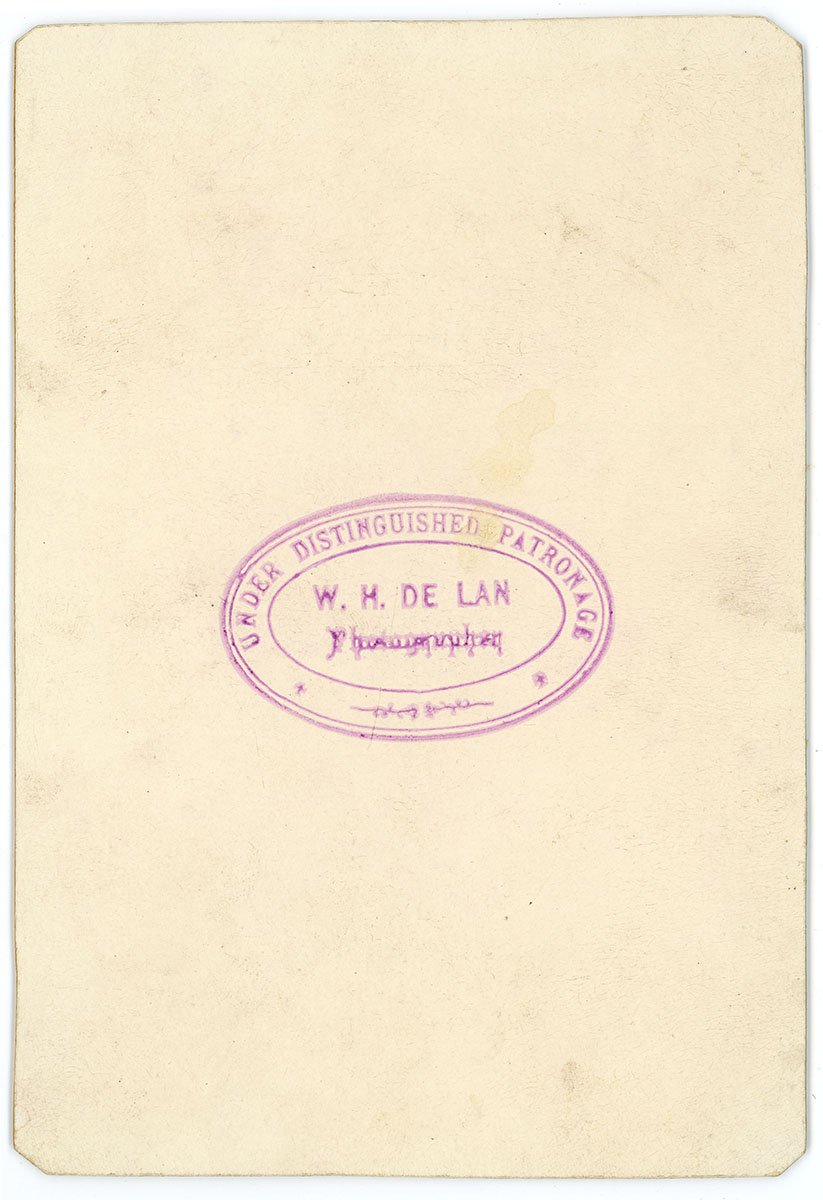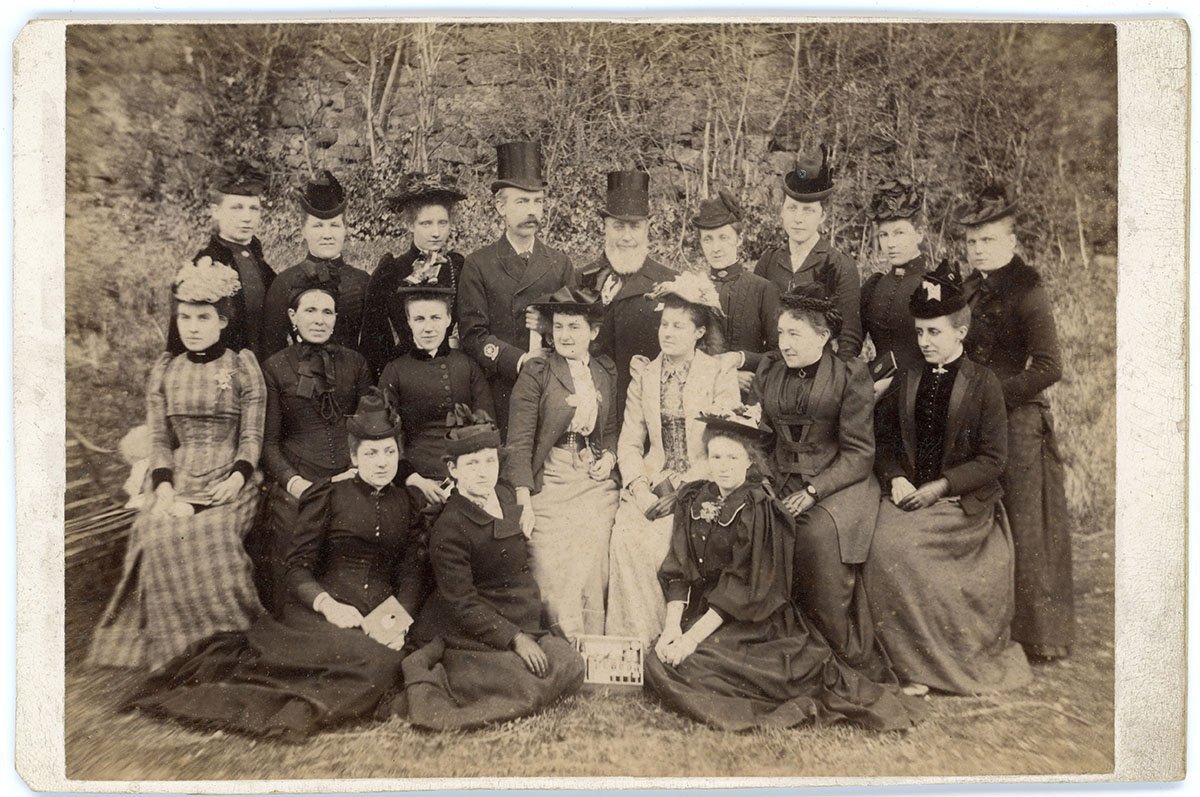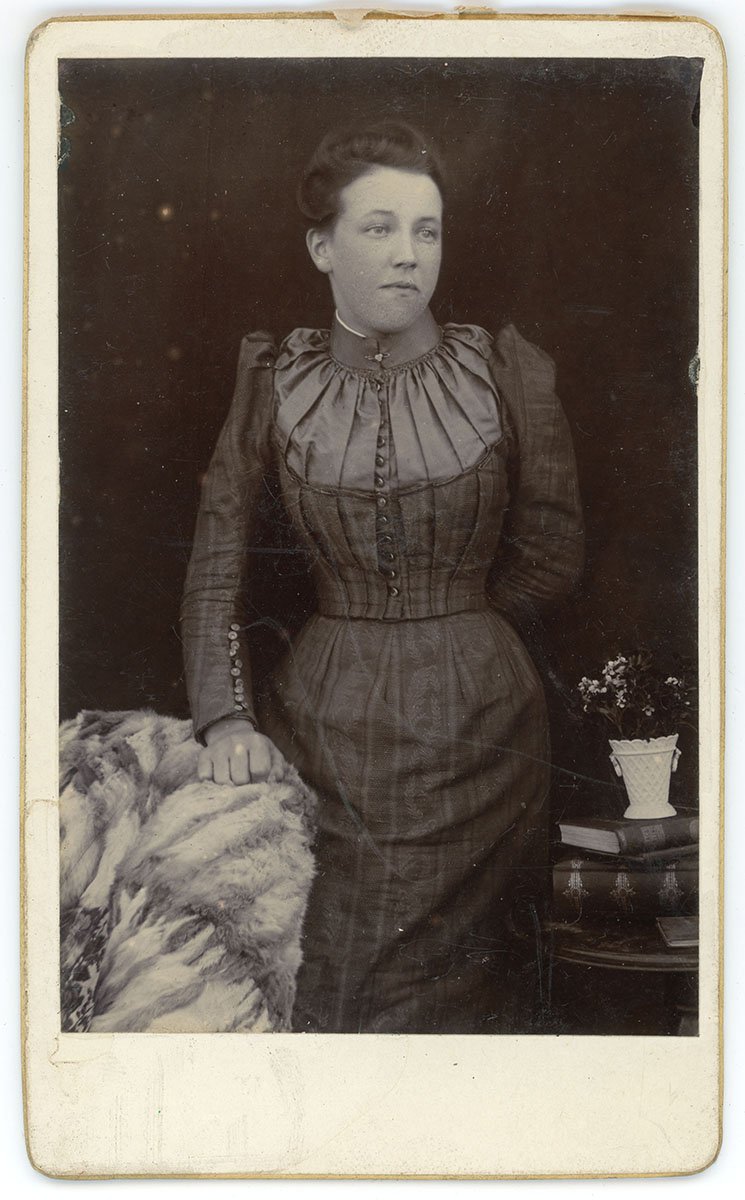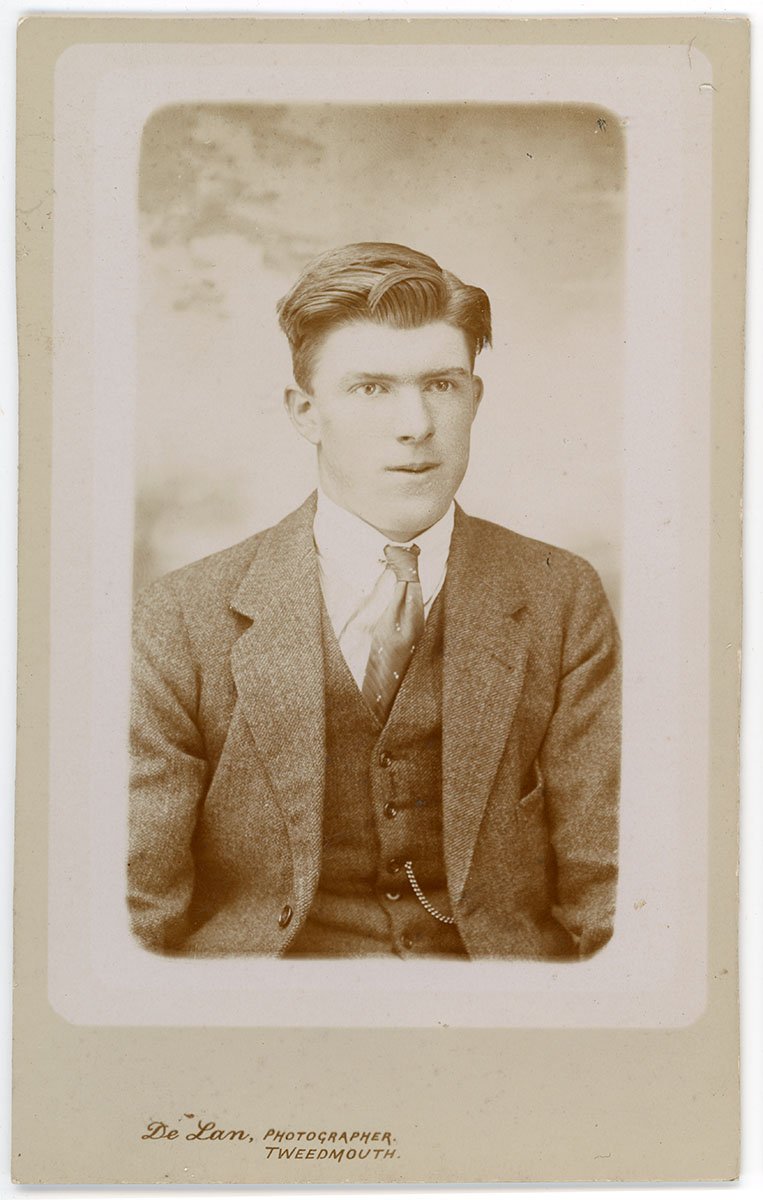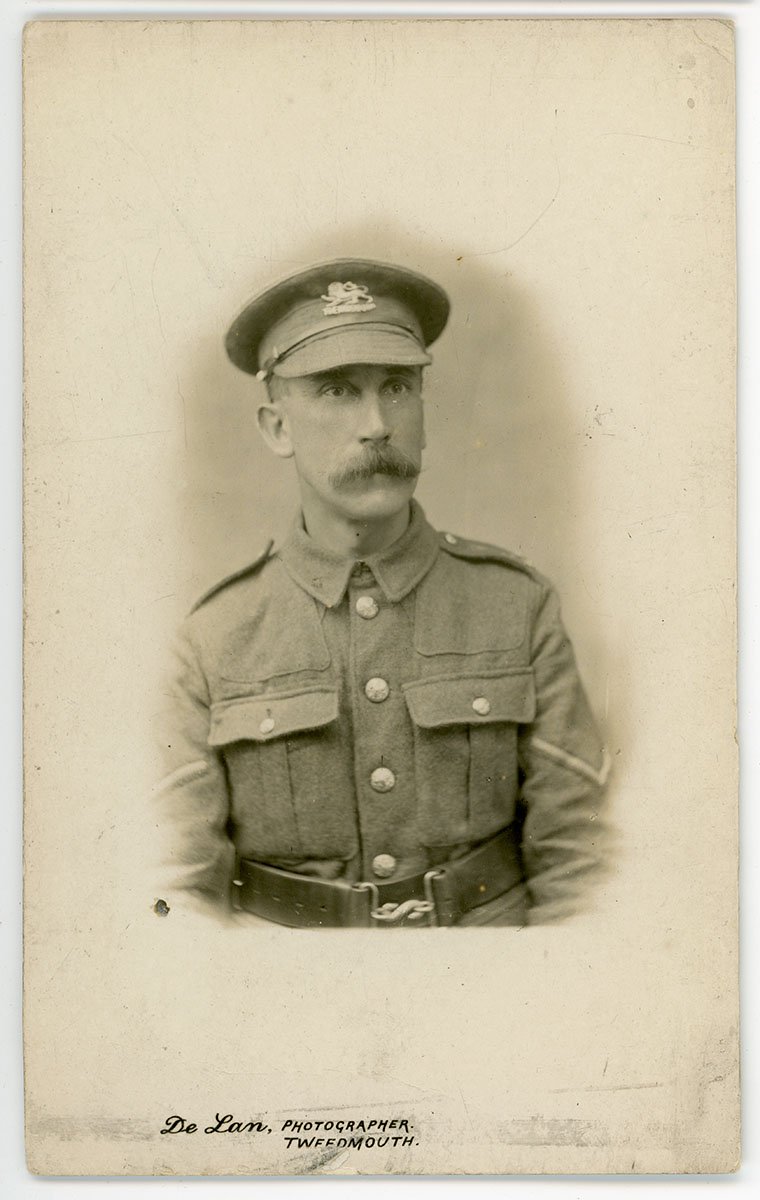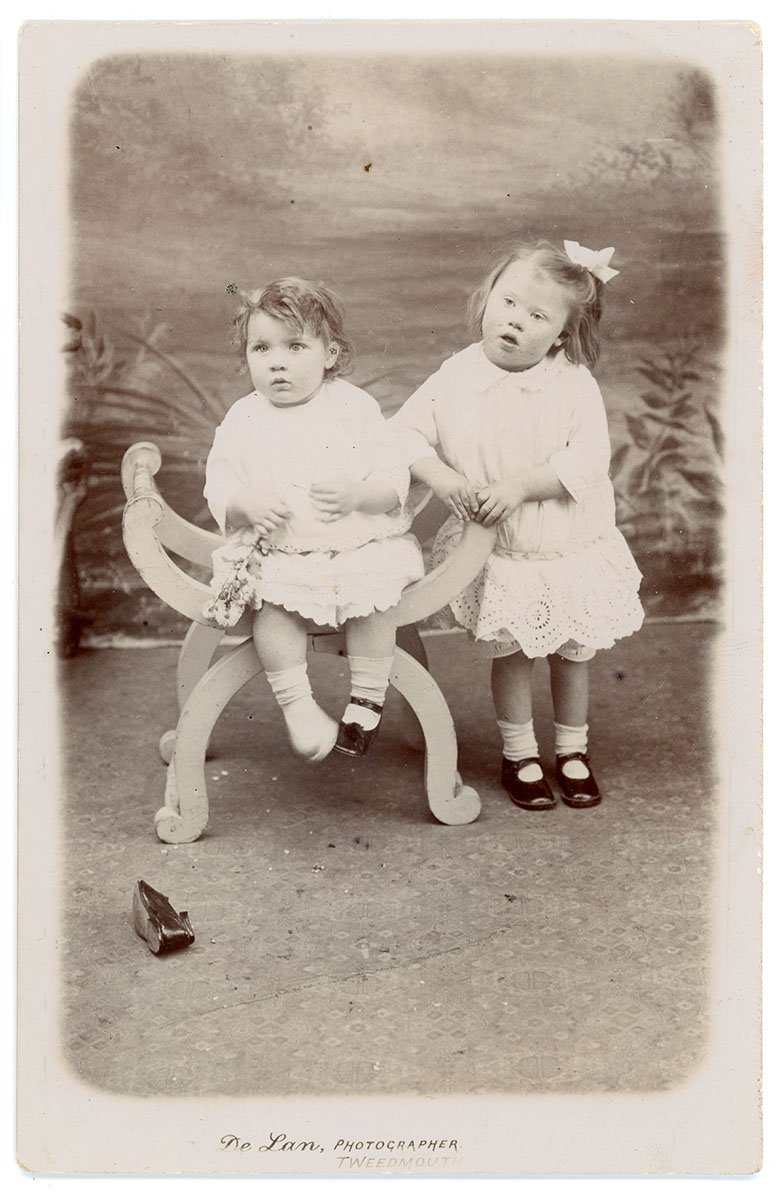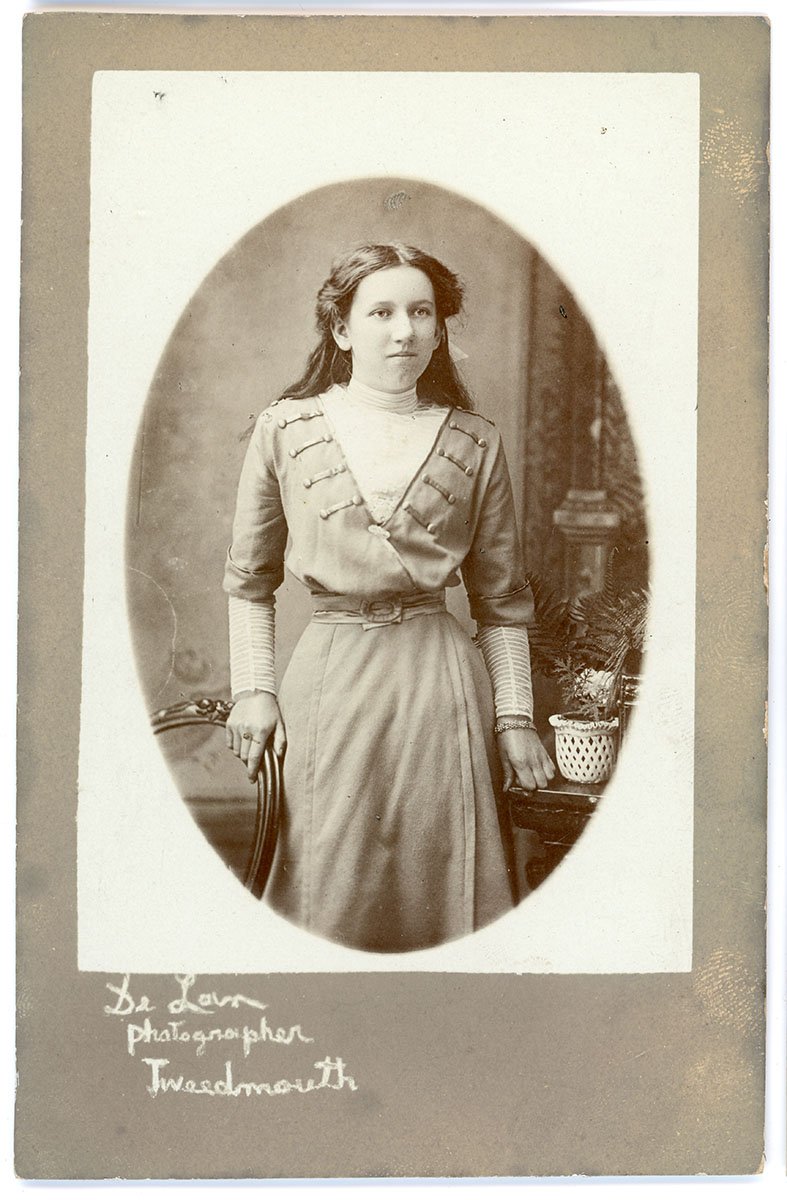The Mysterious Mr De Lan & Family.
The name ‘De Lan’ started for me as just another name at the foot of an old photograph and I expected to find the story of a run of the mill studio churning out the old same portrait. I didn’t expect to unearth such an amazing story!
Postcard portrait taken by De Lan, Photographer, Tweedmouth.
Although I spend much of my time dealing with photographs and negatives from the 20th century, I do sometimes delve a bit deeper into the history of the medium. From the mid 19th century onwards, photographers began to pop up all over the country. Many of these early photographers started life as chemists. Photography in the early days of the 1840s and 50s was a science as well as an art. Glass plates and chemicals had to be prepared on site, hence the need for a background in powders and potions.
It is thought that Berwick’s earliest photographer popped up in Spittal, catering to the affluent clients who came to the village for seaside holidays and to take the waters at the Spa Well. Over a short space of time several others appeared in the town centre and also in Tweedmouth and is one of Tweedmouth’s photographers that we’re going to look at in this piece.
Victorian Berwick, Marygate. c.1895.
Although the story of William Henry De Lan and his family ends in Tweedmouth, it certainly doesn’t begin there. Everything you have in your mind about a prim and proper, Victorian photographer with his studio behind his shop is about to be blown out of the water.
William De Lan’s early life is a bit of a mystery. He was born in Bradford on 23rd June 1844 and his father was Stephen De Lan or possibly Delang. William may have changed his name to the French sounding ‘De Lan’ to suit the artistic nature of his chosen profession. We have no records of his mother’s name or whether he had any siblings.
I think it’s fair to assume that he spent his early photographic career employed in a studio in the Bradford. Here he gained his knowledge of photographic technique and the style of portraiture that was popular at the time. In around 1860, William set up his own studio in the city. Adding to the mystery, we don’t know where exactly his studio was. His Carte de Visites from the time simply say ‘W.H. De Lan - Photographic Artist - Bradford’.
From what would appear to be good base in Bradford, De Lan then decided to hit the road. He quite literally moved lock stock and barrel - but not in the way you might think…
He became a travelling photographer with a mobile studio. This wouldn’t have been unique at the time but it certainly wasn’t common. I’m not sure what form his mobile studio took - there seemed to be a couple of ways of doing it. The first option was to live in a horse drawn caravan and then have a tent and backdrop to use as a studio. The caravan would need to have darkroom as well as sleeping and living facilities. The second option was something slightly more substantial, basically a shed on wheels with a glass section which would be the studio and a solid section which would house the living quarters and darkroom. Some examples of this are shown below.
Whichever option De Lan went for, he made a success of his venture and he began to travel north. In February 1864 we find him in Durham, marrying Rebecca Wilson. She was born in Lincoln and her father, Charles Wilson, was also a photographer. If he too was on the road this may explain why his daughter and family were in Durham.
We then track the De Lan’s journey through birth and baptism records. In January 1865 the couple are in Hartlepool where their first child, Mary Ann, was born. Trade was obviously good in Hartlepool as we find a second daughter was born there in 1866. The growing family then took to the road again stopping in Nether Silton in North Yorkshire in 1868 where their third daughter Margaret Henrietta was born. On 11th September 1868 Mary and Margaret were baptised in Leake, only 2 miles away.
Throughout this time, Henry carried on with his photographic work. His cards from this time do not list a place - supporting the idea of his family’s nomadic life. As he was moving from place to place he wouldn’t have gone to the expense of printing cards for each place. As you’d imagine, life on the road would be tough. It might have been the case that the family travelled in the summer months when the weather was better, going from village to village possibly attending fairs and shows, following the crowds and then parking up for the winter - we will never know for certain.
In April 1871 we find the De Lans at Wearhead near Stanhope, County Durham. William, now 26 is listed as a photographer and their address is given simply as ‘Photographic Caravan’. This address conjures up the image of a reasonably substantial construction comprising of a studio and living facilities as mentioned earlier. In 1877, the caravan pulled into Newcastle where the couple’s fourth daughter, Wilhemina, was born. She died in infancy and the family once again took to the road.
We next pick the family up north of the border in a strange series of events in Berwickshire. An article in the Berwickshire News on 4th March 1879 states that:
‘William Henry De Lan and Rebecca Wilson, or De Lan, travelling photographers were accused of riot and breach of the peace at Reston in front of the shop occupied by Francis Stoddart and also near to the Wheat Sheaf Inn.’
They were both fined for the incident. This seems strange enough in isolation, but only 8 days later, Rebecca died aged 31 and was buried at Cockburnspath. Her death certificate lists the cause of her death as an embolism of the heart. Could this have been brought on by the recent events?
Despite being left to raise three daughters and run his business, Henry continued to move his studio from place to place. As his daughters grew up, they began to work in the family business. In 1881 we find the family south of the border again in Longhougton, near Alnwick. On the census of that year we see that Mary, the eldest daughter, like her father, is listed as a photographer. Her younger sisters are scholars possibly suggesting they attended schools as they travelled.
In July 1887 the caravan had arrived in Morpeth, pitching up by the the Gas Works close to the River Wansbeck. An article in the Morpeth Herald on 16th July states…
An advertisement in the same newspaper reads:
The back of De Lan’s cards state that he was under ‘distinguished patronage’ and this may be as a result of taking the photograph mentioned above (though many just wrote that anyway to make their business sound grand!).
By 1891, the census finds the family in Amble, still in their caravan. By now, the whole family are listed as photographers. Female photographers at this time would have been very rare, even if you look at photography as a hobby. To have three professional female photographers in one family must have been unique.
Over the next 10 years the family once again moved north and in 1901 we find them just over the border in Ayton. Their address is given as a travelling caravan on the High Street. William is now 56 and his daughters are all in their 30s and unmarried. Later in 1901 we find them arriving in Tweedmouth, but the phrase ‘For a short time only’ on their advert suggests they’d soon be on the move one again.
The above advert in the Berwickshire News, which first appeared on 24th November 1901, hails ‘W.H. De Lan’s Studio, Bridge End, Tweedmouth’. Their stay in Tweedmouth was to last much longer than their usual stops. The advert was repeated in the newspaper until 1905. The Da Lans pitched up on the piece of land to the south of the Old Bridge, which until recently has been occupied by a monumental sculptor. Here, they plied their trade on the side of the main London to Edinburgh road.
In February 1904 a Mr Wilson advertised the lease of Bridge End House (14 Main Street), opposite their pitch. Possibly tempted by their increasing years, or by possibe ill health, the family took the property, leaving their nomadic lifestyle to settled down. Bridge End House was a substantial property with outbuildings and a garden at the rear and would have offered ample space for a studio.
A view of Tweedmouth from the top of Berwick Town Hall, c. 1928.
Twenty years previously, the house had previously been occupied by a chemist and photographer named Peter McIntyre. He founded his business there in 1857 and opened his studio the following year. He seems to have had a successful business at Bridge End. In 1881 he announced that he had opened his new photographic rooms and that he could also photograph paintings, engravings, houses and machinery. McIntyre died in 1886, and it had been mentioned by some that William De Lan had bought his business and property but there is no evidence to support this theory as he was still very much on the road at this time.
An early cabinet card from the De Lan Studio at Tweedmouth. Note what could be trees in the top corner suggesting that portraits may have been taken outdoors, taking advantage of the best sunlight.
In August 1905, William De Lan died at Bridge End House at the age of 61. The loss of their father was obviously felt heavily and a note in the Berwick Advertiser from the Misses De Lan thanks the public for their sympathy.
Mary, Rebecca (Julia) and Margaret continued the family business in Tweedmouth, all still being listed as photographers in the 1911 census. During the war years of 1914-18, their work, like all studios across the country, included photographing numerous portraits of soldiers to leave as mementos before they went off to fight. In his book ‘Thro the Lens’, Jim Walker states that Mr Tom Burn of Spittal remembered seeing examples of their work hanging in glass frames at the western entrance to the Tweed Dock.
By 1921, Julia had retired from the business and was keeping the family home whilst her sisters continued to work. She had been in ill health for some time and died in September 1923. She was buried with her father in Tweedmouth Cemetery. Her obituary (below) tells of her family’s amazing exploits as photographers.
Berwickshire News, 18th September 1923.
It was around this time that Mary and Margaret retired. In 1928 or 29 the sisters moved to 32 Osbourne Crescent, a short walk from their old studio which was demolished to enable the creation of Union Brae.
Margaret died on 11th August 1936, her obituary describes her as being a highly respected resident of the town and describes her late father as a ‘pioneer of photography’.
The remaining and eldest sister, Mary died on 4th November 1943 at 76 Castlegate. There was no obituary in the press as she was the last of the line.
It has been fascinating just to scratch the surface of what must have been an amazing life on the road. It just shows what amazing stories lie in the most unexpected places. I certainly wouldn’t have placed three pioneering female photographers in Tweedmouth! If only we could fill in the gaps - I’ll keep looking - you just never know what might turn up!


